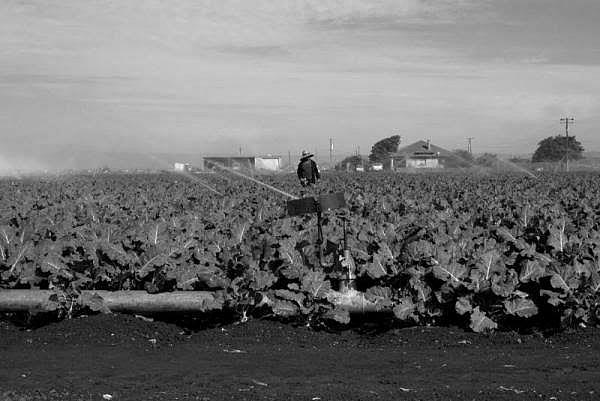Shining a bright light on substandard housing in Salinas, California

(Photo by Sebastián Hidalgo/The Salinas Californian)
While the overcrowded living conditions of farmworkers have been well reported, the Central California city of Salinas has yet to find a solution.
Since the 2018 Farmworker Housing Study and Action Plan for Salinas came out, many Latino farmworkers are still living in overcrowded conditions, H-2A workers sleep four men to a motel bedroom while families crowd into dwellings not meant for permanent habitation, like garages or RVs hooked up to someone’s home. Still others stack entire families in one bedroom or into the living room just to make rent while visiting two or three food banks on the weekends.
Little has changed, as urgency has slipped away.
By reexamining the issue in a comprehensive, compassionate fashion, Catchlight Local fellow and visual journalist Sebastian Hidalgo and I hoped to bring the issue of health and substandard, overcrowded housing conditions back to the forefront to elicit a stronger response from elected officials and local organizations. The project was supported by a grant from the Center for Health Journalism’s Impact Fund.
Furthermore, we wanted to amplify the voices of people experiencing the housing crisis, who knew the issue inside and out.
During our initial reporting we began connecting with housing and farmworker advocates in and around Salinas, learning what they considered the most pressing issues of the day. We also reached out to several local politicians and farming advocates to get their takes on the issue.
Several advocates suggested we connect with the family resource centers around Salinas, and host a dinner to draw in locals experiencing the housing crisis who might not be able to attend a meeting without some additional assistance.
After surveying people on the south side of Salinas, we held a dinner on the east side and spoke with about 20 locals, learning from them what they considered the most pressing issues. Their answers differed in a lot of ways from those of the housing advocates, and drove us to explore new avenues of reporting.
It also resulted in the publication of a booklet and newspaper article on the topic of renters’ rights in California, spelling out what rights renters and landlords have, regardless of age, ability, nationality, immigration status, and language.
Several of these housing and farmworker advocate organizations ended up connecting us to our best sources, as well, people who were comfortable sharing their circumstances as well as their hopes for the future. We learned not just about their homes, and what makes a home, but what they hoped for their children and grandchildren, for their careers, for themselves.
Through our work we hoped to give farmworkers a larger, more public platform to talk about the problems they faced when finding and making a home. We also revisited reporting and connected locals to housing advocates and resources during our public newsroom, our final of three engagement events.
Our hope throughout has been that this might result in more housing projects being built in the county and Salinas, agriculture companies investing more in better accommodations for seasonal farmworkers, and expansion of health services for those who need them most.
